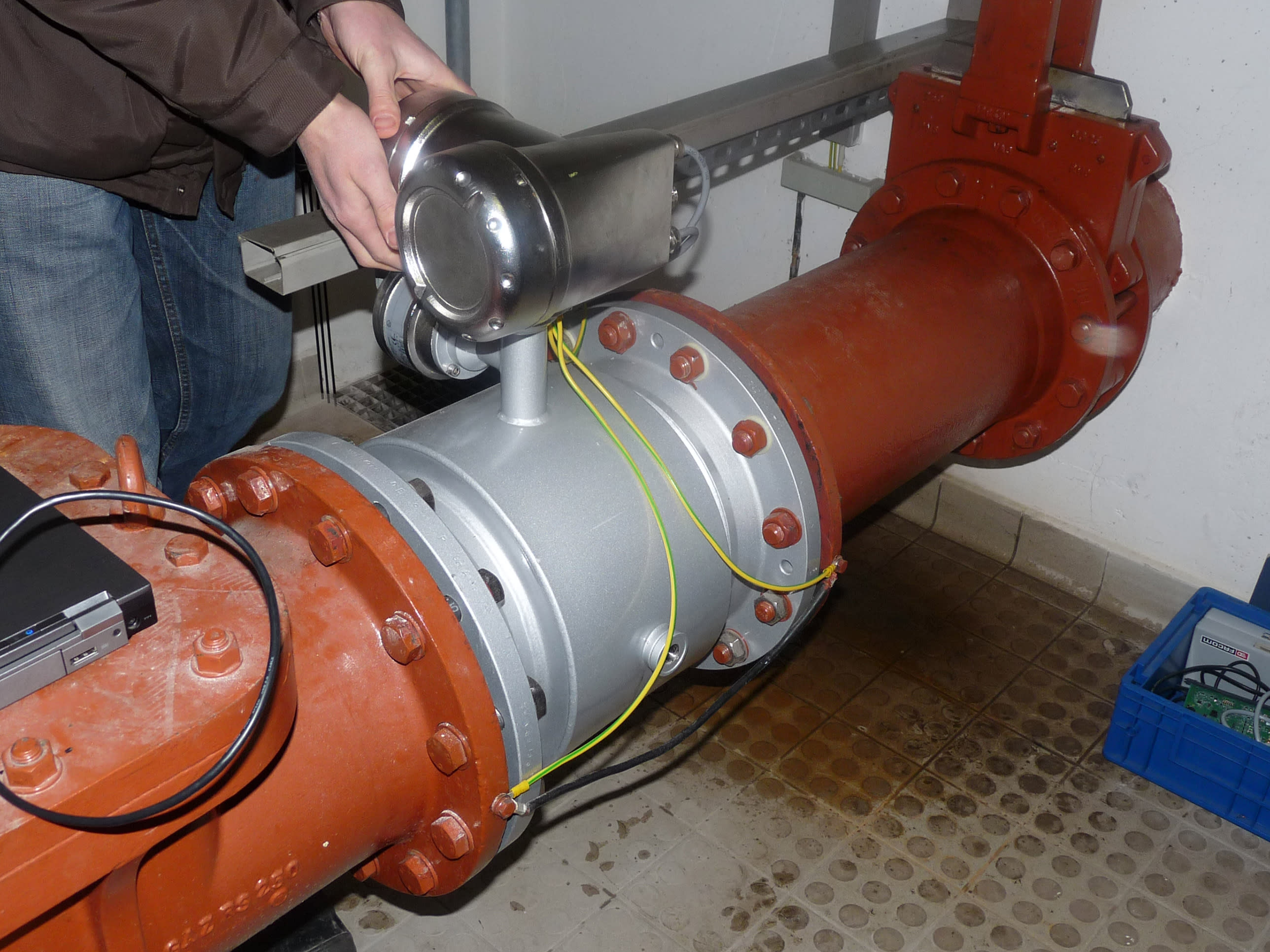Flow monitoring in the partially filled discharge of a rainwater retention basin
Application Note | Water & Wastewater
- Managing water discharge into a mixed water drainage system
- Electromagnetic flow measurement of water loads in Ex zone 1
- Automated discharge control by way of a structure with overflow

Background
An operator of a municipal sewage system in southern Germany uses a mixed water drainage system through which both household water loads and rainwater are transferred to a municipal treatment plant via a mixed water collection system. The influent to the sewage treatment plant must be checked, especially when the rainwater load is high, and regulated accordingly because if the plant floods the peripheral areas, the wastewater can cause a great deal of environmental damage. In order to drain off excess precipitation loads as necessary, the municipal operator relies on several rainwater retention basins (RRB) for intermediate storage. To prevent the sewage treatment plant from hydraulic overload, the respective water authority requires that the discharge from the rainwater basin into the mixed water system does not exceed a specified flowrate (m3/h).The storage capacity of the RRB can only be documented with simultaneous evidence regarding the discharge.
Measurement requirements
In order to check the quantity of precipitation flowing into the mixed water duct precisely, the operator required a new flowmeter for the discharge of this RRB. So that both the rainwater and the dry weather flow does not exceed an upper limit of 40 l/s, the quantity discharged must be controlled by means of gate valves. Because the rainwater basin discharge is an unpressurized, gravity pipeline (DN 250 / 10"), the only measuring device that could be used is one that can also be used in partially filled pipelines. Moreover, because fermentation processes can produce flammable methane (CH4) and easily ignitable hydrogen sulphide (H2S) in the wastewater, both the flow sensor and the converter had to be approved in accordance with ATEX for use in Ex zone 1.
KROHNE Solution
Due to the high requirements for the measurement and the explosion protection, the only measuring device suitable for this application was the TIDALFLUX 2300 F. The electromagnetic flowmeter was installed in the discharge line of the RRB by means of a flange connection.
The measuring instrument has a patented level measuring system. For this reason, it can perform reliable measurements even in partially filled pipelines starting at a level of 10 percent. The capacitive level sensors are integrated into the liner of the measuring device such that they do not come into contact with the wastewater. Therefore, the measurement is not affected by grease and oil floating on the surface. In addition, the polyurethane liner of the TIDALFLUX protects the instrument from abrasion and chemicals. All of the components of the measuring device are approved in accordance with ATEX for use in Ex zone 1.
Customer benefits
With the TIDALFLUX 2300 F, the operator was able to comply with the maximum upper limit for dry weather and rainwater discharge into the mixed water drainage system. The measuring results are transferred, respectively, to a gate valve or electrical gate valve located in the structure with overflow whereby the customer can control the flow automatically before and after the measuring device. The benefit here is that the measuring instrument can perform reliable measurements in partially filled pipelines and is the only device on the market at this time that meets the requirements for use in Ex zone 1 with respect to both the sensor and the converter.
In addition, thanks to the TIDALFLUX, the municipal operator can check the storage volume of its RRB and, in this way, also demonstrate efficiency to the water authority because, in contrast to a rain overflow basin, the RRB does not overflow into a body of water and must be able to store the entire amount of precipitation when it rains. For this reason, the investment in the TIDALFLUX pays off for the customer because with flow measurement, it can be regularly proven that the size of the basin is sufficient and that an expensive expansion or even the construction of another RRB is not necessary.




